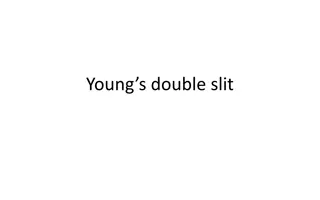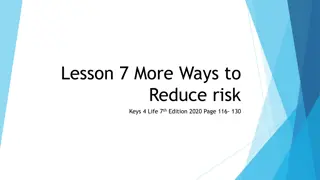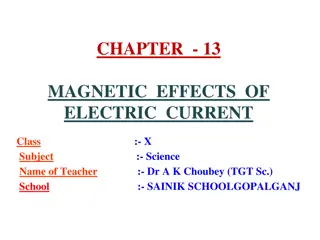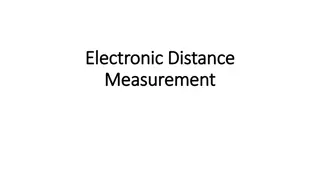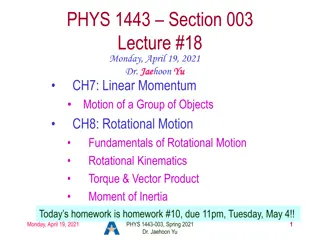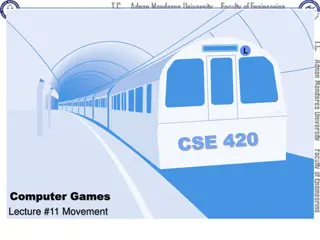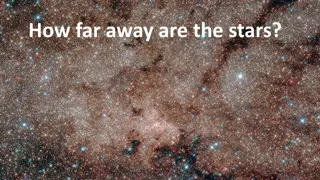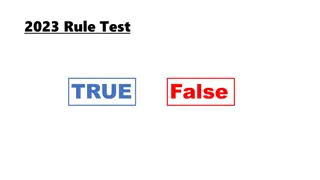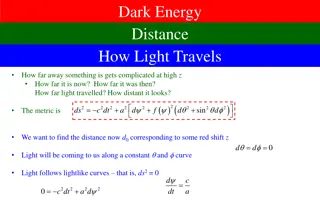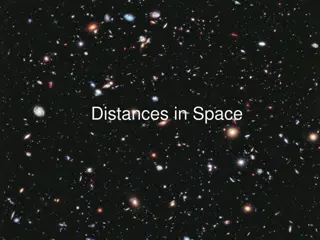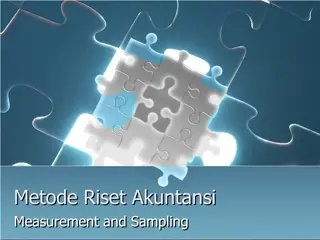Understanding Motion and Measurement of Distances in Science at Sainik School Gopalganj
Explore the concepts of motion and measurement of distances in science as taught by Dr. A.K. Choubey at Sainik School Gopalganj. Discover the development of means of transport, different measurement methods like non-standard and standard measures, the significance of measurement, and the International System of Units. Learn about the meter as the standard unit of length, measurement with a scale with broken ends, and the importance of positioning the eye correctly for accurate measurements.
Download Presentation

Please find below an Image/Link to download the presentation.
The content on the website is provided AS IS for your information and personal use only. It may not be sold, licensed, or shared on other websites without obtaining consent from the author. Download presentation by click this link. If you encounter any issues during the download, it is possible that the publisher has removed the file from their server.
E N D
Presentation Transcript
SAINIK SCHOOL GOPALGANJ CLASS VI SCIENCE MOTION AND MEASUREMENT OF DISTANCES BY Dr A K CHOUBEY
Development of Means of Transport When we are talking of movement from one place to another, the measurement of distance is logically the next step. This linkage is to be made evident to the child. In ancient time man used to move only on foot and carry goods either on his back or on the back of some animals. A great change in the modes of transport was made: by the invention of wheel. by the invention of steam engine
. Non-standard measures: The lengths of steps, arms, hands, or fingers of different people are different, therefore the distance measured with their help is not always reliable. These methods are, therefore, called non-standard measures. Standard measures: Measures that are the same all over the world are known as standard measures. Unit of measurements It involves the comparison of an unknown quantity with some known quantity of the same kind. This known fixed quantity is called unit. The result of measurement is expressed in two parts. One part is a number; the other part is the unit of measurement
Need for Measurement I want to know how tall am I? How long can I jump? I want to compare the size of things. Will the cupboard that I wish to buy go through the door of my home? What should be the height of the mirror so that everybody in the house can see his or her full image? In October 1960, the 12th general conference on weight and measures adopted the International system of units. The System International Units is the set of units to maintain uniformity all over the world.
Metre: It is the standard unit of length. The symbol of metre is m. Each metre (m) is divided into 100 equal divisions, called centimetre (cm). Each centimetre has ten equal divisions, called millimetre (mm). Thus 1 m = 100 cm
Measurement with a scale with broken ends Avoid taking measurements from zero mark. Use any other full mark of the scale, say 1.0 cm. Subtract the reading of this mark from the reading at the other end. For example, in Fig. 10.3 (6), the reading at starting mark is 1.0 cm and at the other end it is 6.5 cm. Therefore, the length of the object is (6.5 1.0) cm = 5.5 cm.
Correct position of the eye is also important for making measurement. Your eye must be exactly above the point where the measurement is to be taken as shown in Fig. 10.4. Position A is the correct position of the eye. Note that from position A , the reading is 1.0 cm. From positions B and C , the readings may be different.
Measuring the length of a curved line: We cannot measure the length of a curved line directly by using a metre scale. We can use a thread or divider to measure the length of a curved line. Measurement of length is not only about measuring straight lines. As you would have seen in the chapter, the skill of measuring a curved line using thread has been given in an activity. how a tailor takes various measurements of your body with the help of a graduated flexible tape. It would be good to give students practice in such skills and you may do this in various ways not just the one suggested in the book. students to measure the circumference of a pipe or bangle, the circumference of their head or the perimeter of their class room.
Motion: It is a state of objects in which they are moving, that is, they are changing their place with the changing time. Example- Rest: All the stationary objects which are not in motion, that is, do not change their place with time are said to be at rest. Example any book kept on table
Rectilinear motion: When the objects change their position with time along a straight line, this type of motion is called rectilinear motion. Circular motion When a body moves in a circular path, its motion is known as circular motion Examples: motion of stone tied in a thread and whirled. motion of a blade of an electric fan. motion of second s hand in a clock. In circular motion, the object remains at the same distance from a fixed point.
Rotational motion: Motion in which a whole body moves about an axis is called a rotational motion. Example: motion of a top.
Periodic motion: Motion in which an object repeats its motion after a fixed interval of time is called periodic motion. Examples: Oscillations of a pendulum. (Motion of a swing.
Combination of two or more types of motions: In some situations, the motion of an object may be a combination of two or more of the above mentioned types of motion. Examples: Motion of a ball on the ground. Here, the ball is rotating about an axis but the axis itself is moving along a straight line. Thus, the ball executes a rectilinear motion as well as rotational motion. Motion of earth earth executes rotations on its axis and also revolves around the sun.
Distance: Measurement of gap between two points in certain units is called distance. It is the actual length covered by an object. Its S I Unit is metre(m) Large distances are measured in KM. Example- Distance from your hostel to class room .


